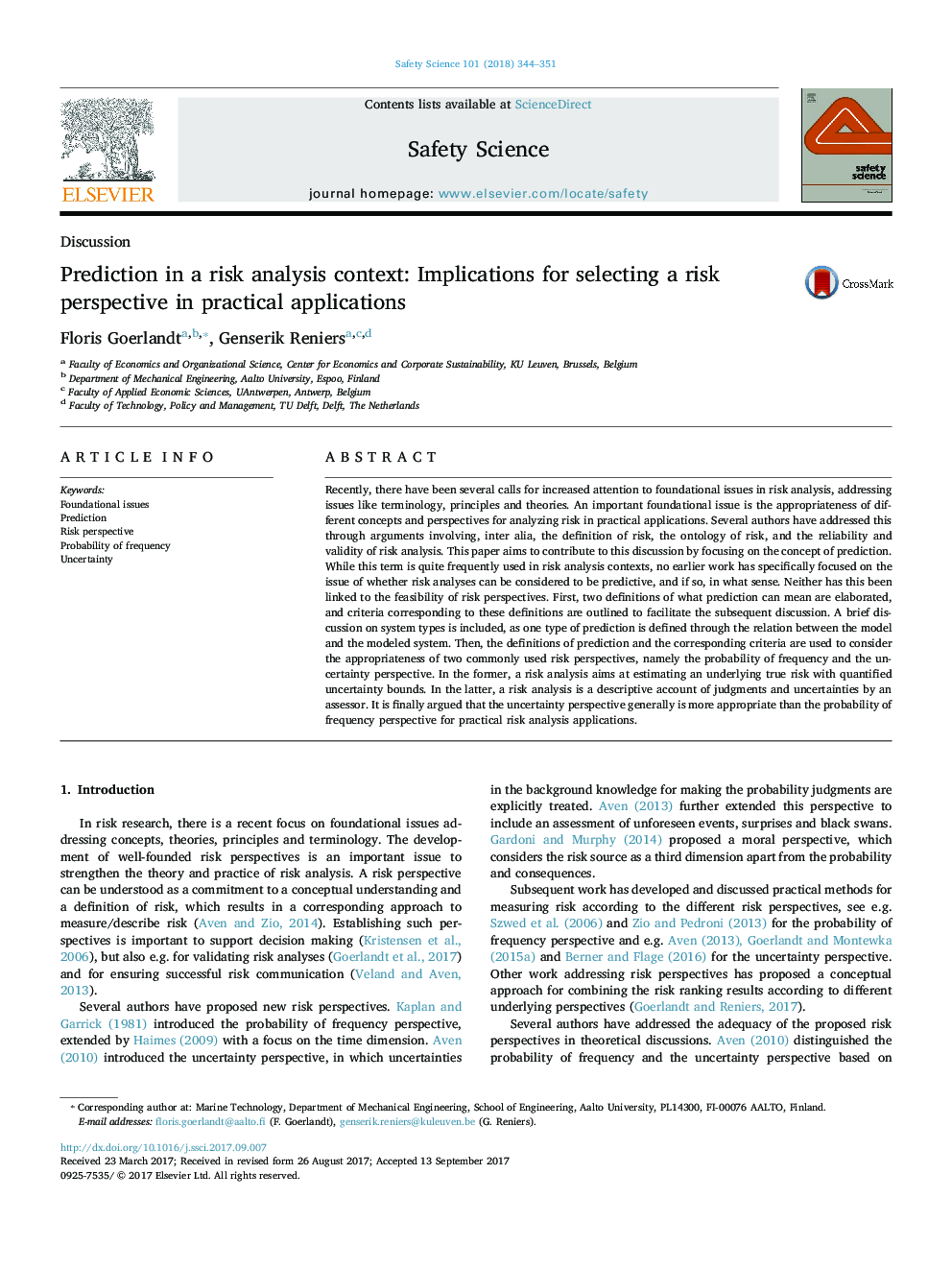| Article ID | Journal | Published Year | Pages | File Type |
|---|---|---|---|---|
| 6975180 | Safety Science | 2018 | 8 Pages |
Abstract
Recently, there have been several calls for increased attention to foundational issues in risk analysis, addressing issues like terminology, principles and theories. An important foundational issue is the appropriateness of different concepts and perspectives for analyzing risk in practical applications. Several authors have addressed this through arguments involving, inter alia, the definition of risk, the ontology of risk, and the reliability and validity of risk analysis. This paper aims to contribute to this discussion by focusing on the concept of prediction. While this term is quite frequently used in risk analysis contexts, no earlier work has specifically focused on the issue of whether risk analyses can be considered to be predictive, and if so, in what sense. Neither has this been linked to the feasibility of risk perspectives. First, two definitions of what prediction can mean are elaborated, and criteria corresponding to these definitions are outlined to facilitate the subsequent discussion. A brief discussion on system types is included, as one type of prediction is defined through the relation between the model and the modeled system. Then, the definitions of prediction and the corresponding criteria are used to consider the appropriateness of two commonly used risk perspectives, namely the probability of frequency and the uncertainty perspective. In the former, a risk analysis aims at estimating an underlying true risk with quantified uncertainty bounds. In the latter, a risk analysis is a descriptive account of judgments and uncertainties by an assessor. It is finally argued that the uncertainty perspective generally is more appropriate than the probability of frequency perspective for practical risk analysis applications.
Related Topics
Physical Sciences and Engineering
Chemical Engineering
Chemical Health and Safety
Authors
Floris Goerlandt, Genserik Reniers,
